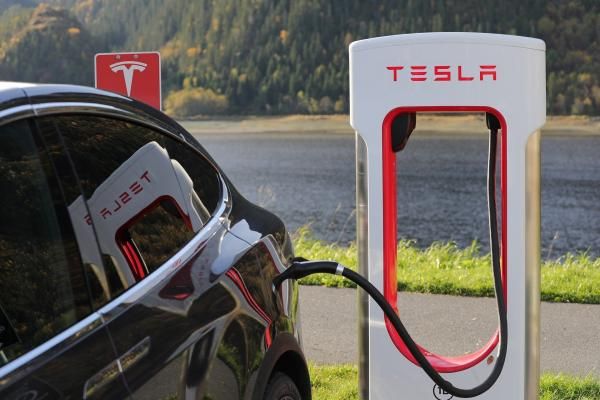Read The Full Article On: Businesswire
The global EV powertrain market accounted for US$ 30,095.5 million in 2018 and is expected to grow at a CAGR of 12% over the forecast period 2019-2027, to account for US$ 82,382.3 million by 2027.
The EV powertrain market outlook is positive, as the electric vehicles are gaining popularity among the end-users. Increasing the adoption of these vehicles would enable the manufacturers to increase their production lines, thereby requiring an increased quantity of EV powertrains. This factor is expected to drive the EV powertrain market.
Additionally, the presence of a large number of well-established and automotive industry recognized players in the market is allowing the end-users to technologically enhance powertrain products, which is also a key driving force of the EV powertrain market.
The volume of EV powertrain procurement is at a constant rise in the current scenario, owing to the fact that the OEMs are increasingly procuring the powertrains in large quantities to cater to the needs of the manufacturing of existing vehicle models and to test respective newer models practically.
Globally, several countries have been adopting stringent CO2 emission regulations, which is supporting the electrification of vehicles. The vehicle manufacturers have been reinforcing respective electrification policies and strategies to adhere to the strict regulations. In European countries, plug-in hybrid electric vehicles (PHEV) are linking the transformation to all-electric vehicles.
China’s market for new energy vehicles (NEVs, which consists of EVs and PHEVs) is anticipated to magnify quickly until 2020. The US market, on the other hand, is expected to accelerate with new policies and standards set towards the electrification of vehicles. These factors are significantly driving the EV powertrain market.
Reasons to Buy
- Save and reduce time carrying out entry-level research by identifying the growth, size, leading players and segments in the global EV powertrain market
- Highlights key business priorities in order to assist companies to realign their business strategies
- The key findings and recommendations highlight crucial progressive industry trends in the global EV powertrain market, thereby allowing players across the value chain to develop effective long-term strategies
- Develop/modify business expansion plans by using substantial growth offering developed and emerging markets
- Scrutinize in-depth global market trends and outlook coupled with the factors driving the market, as well as those hindering it
- Enhance the decision-making process by understanding the strategies that underpin commercial interest with respect to client products, segmentation, pricing and distribution
Key Topics Covered
1. Introduction
1.1 Scope of the Study
1.2 Report Guidance
1.3 Market Segmentation
1.3.1 Global EV Powertrain Market – by Product Type
1.3.2 Global EV Powertrain Market – by Application
1.3.3 Global EV Powertrain Market – by Geography
2. Key Takeaways
3. Research Methodology
3.1 Coverage
3.2 Secondary Research
3.3 Primary Research
4. EV Powertrain Market Landscape
4.1 Market Overview
4.2 PEST Analysis
4.2.1 EV Powertrain Market – North America PEST Analysis
4.2.2 EV Powertrain Market – Europe PEST Analysis
4.2.3 EV Powertrain Market – APAC PEST Analysis
4.2.4 EV Powertrain Market – RoW PEST Analysis
4.3 Ecosystem Analysis
5. EV Powertrain Market – Key Market Dynamics
5.1 Market Drivers
5.1.1 Government Initiatives Toward Adoption of EV Powertrains
5.1.2 Technological Development in Conventional Engines
5.2 Market Restraints
5.2.1 Lack of Expertise in Several Developing Countries and High Price of Vehicles is a Limitation
5.3 Market Opportunities
5.3.1 ICE Vehicle Makers Venturing into Electric Vehicle Segment
5.4 Future Trends
5.4.1 Reduction in Powertrain Cost Would Stimulate Market Growth
5.5 Impact Analysis of Drivers and Restraints
6. EV Powertrain Market – Global Market Analysis
6.1 Global EV Powertrain Market Overview
6.2 Global EV Powertrain Market, Forecast and Analysis
6.3 Market Positioning – Top Five Players
7. EV Powertrain Market Analysis – by Product Type
7.1 Overview
7.2 EV Powertrain Market Breakdown, by Product Type, 2018 and 2027
7.3 Series Hybrid Powertrain
7.4 Battery Electric Vehicle Powertrain
7.5 Series-Parallel Hybrid Powertrain
7.6 Mild Hybrid Powertrain
7.7 Parallel Hybrid Powertrain
8. EV Powertrain Market Analysis – by Application
8.1 Overview
8.2 EV Powertrain Market Breakdown, by Application, 2018 and 2027
8.3 Passenger Cars
8.4 Commercial Vehicles
9. EV Powertrain Market – Geographic Analysis
9.1 Overview
9.2 North America EV Powertrain Market, Revenue and Forecast to 2027
9.3 Europe EV Powertrain Market, Revenue and Forecast to 2027
9.4 APAC EV Powertrain Market, Revenue and Forecast to 2027
9.5 RoW EV Powertrain Market, Revenue and Forecast to 2027 (US$ Mn)
10. EV Powertrain Market – Industry Landscape
10.1 Overview
10.2 Market Initiative
10.3 New Development
11. EV Powertrain Market – Company Profiles
11.1 Continental AG
11.2 Robert Bosch GmbH
11.3 Cummins, Inc.
11.4 Maxim Integrated Products, Inc.
11.5 Magna International Inc.
11.6 Tata Elxsi
11.7 Dana Limited
11.8 Valeo S.A.
11.9 Mahle GmbH
11.10 ZF Friedrichshafen AG

